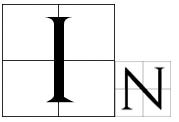Member-only story
A Grisly Tale of Nineteenth-Century Dentistry
Inside the market for healthy human teeth
 In the early 1800s, dentistry was a booming but primitive field. Caring for teeth became a profession with a (somewhat) scientific basis during the 1700s when French surgeon Pierre Fauchard published the first book of modern dentistry, The Surgeon Dentist. At the time, there was no licensure for dentists; anyone could dabble in dentistry if they wanted to. Fauchard made the field more professional — he invented methods for modern procedures like filling cavities and fitting people with dentures. He also discovered that sugar caused many of our dental problems (not that this, or any subsequent urging from generations of dentists, changed anybody’s eating habits).
In the early 1800s, dentistry was a booming but primitive field. Caring for teeth became a profession with a (somewhat) scientific basis during the 1700s when French surgeon Pierre Fauchard published the first book of modern dentistry, The Surgeon Dentist. At the time, there was no licensure for dentists; anyone could dabble in dentistry if they wanted to. Fauchard made the field more professional — he invented methods for modern procedures like filling cavities and fitting people with dentures. He also discovered that sugar caused many of our dental problems (not that this, or any subsequent urging from generations of dentists, changed anybody’s eating habits).
The need for dentists expanded along with the profession itself. As sugar became more available in Europe due to the establishment of plantations in the New World, Europeans gorged on the sweet stuff. The average British person consumed five times as much sugar in 1770 as they had in 1710. Sugar was England’s biggest import for much of the 1700s. All this led to an epidemic of tooth decay in many European countries. More and more people were having their teeth pulled, and they needed replacements.
